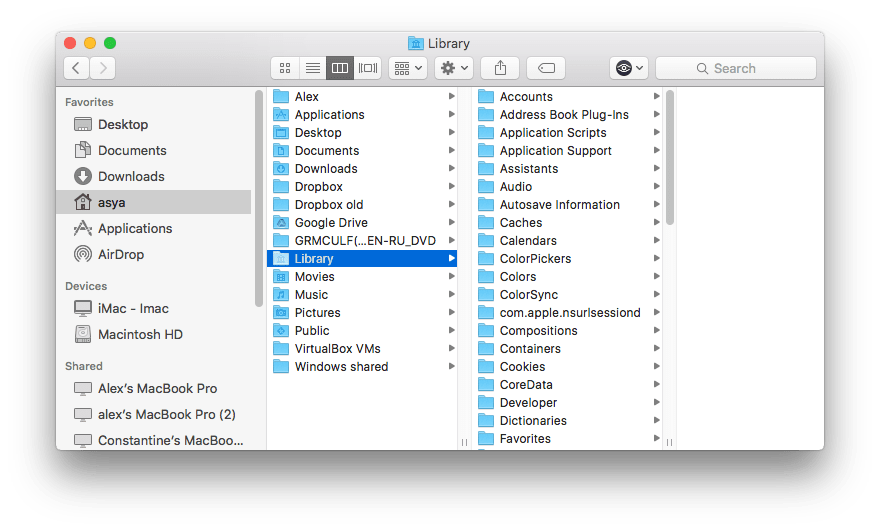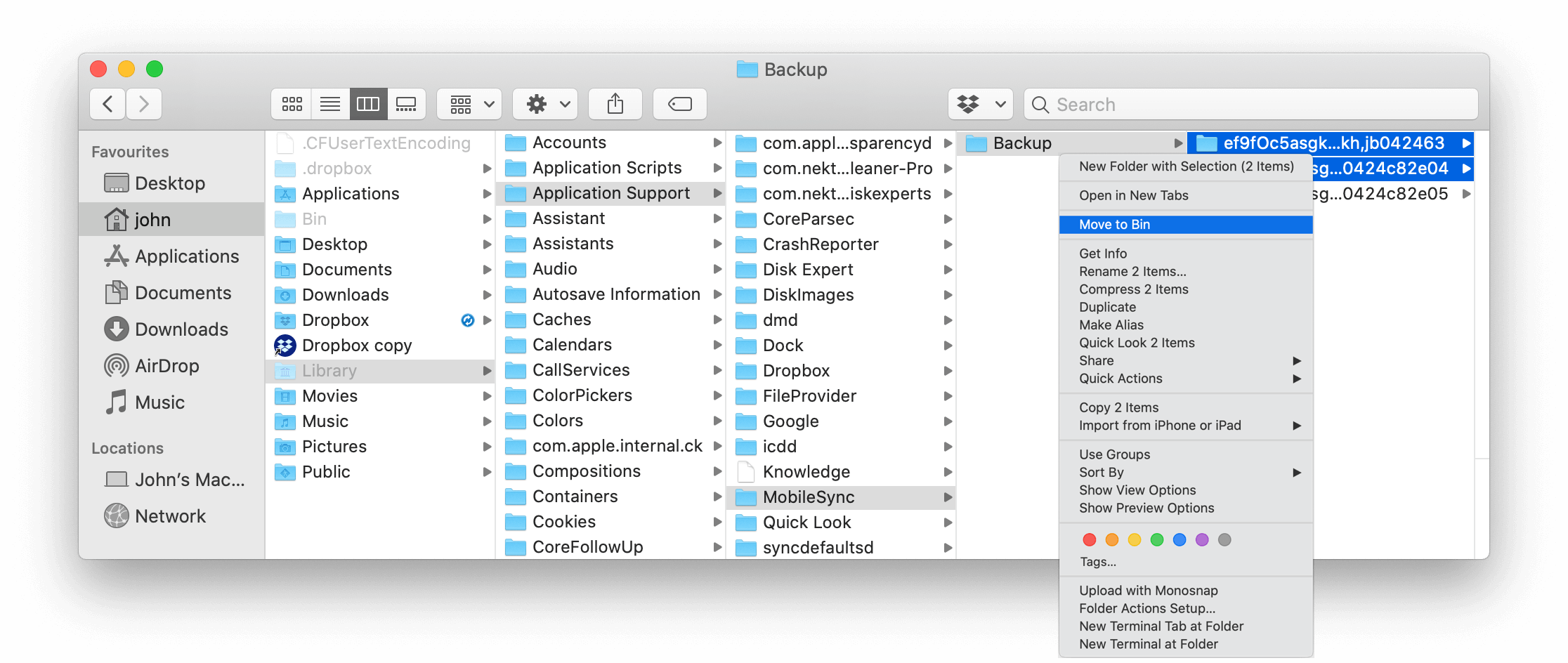2021. 1. 14. 15:23ㆍ카테고리 없음
- Mac Os Users Username Library Application Support Mobilesync Clean Up Free
- Mac Os Users Username Library Application Support Mobilesync Clean Up Windows 10
- Mac Os Users Username Library Application Support Mobilesync Clean Up Online
- Mac Os Users Username Library Application Support Mobilesync Clean Up System
This article will show you how to clean up iTunes library and make the iTunes well organized. Check it out to get your iTunes cleaner. Disorganized, it's time to get your iTunes in order. In this article, we will offer you some suggestions on how to clean up music and audio files in iTunes step by step. For users running Mac OS X the.
What we all know is that iTunes can back up iPhone, iPad to our PCs or Macs, but what does iTunes store these iPhone/iPad backups? You may have this question when you can't find your iPhone backups in iTunes, or want to change the location to store iPhone backups, or to view what is inside the iTunes backups.
This post will show the iTunes backup location on Windows 10/8/7 and Mac respectively. Also, you will learn all the ways to find iTunes backup location and even better, learn about the steps to change the location of iPhone backup.
iTunes Backup Location on Windows 10/8/7
On Windows PC, iTunes backups are stored in %APPDATA%Apple ComputerMobileSync. To be more specific:
For users of Windows 10/8/7 or Vista, you can find iPhone backup files in this path:C:Users[username]AppDataRoamingApple ComputerMobileSyncBackup;
For Windows XP users, your computer stores all of your iPhone backup files in the path like this:C:Documents and SettingsuserApplication DataApple ComputerMobileSyncBackup.
For the Windows Store version of iTunes, the location is slightly different. The iPhone backups are stored under Users[USERNAME]AppleMobileSyncBackup.
Quick Way to Find iTunes Backup Location
It is time-consuming to locate your iPhone backups by looking into folders following the path above. Here is a quick way to find your iPhone backups immediately.
Find iTunes backups from the Run Window
Step 1: Press Windows + R keys to bring up the Run window.
Step 2: Enter %APPDATA%Apple ComputerMobileSync.
Step 3: Click OK. The iTunes backups folder will be opened.
For the Windows Store version of iTunes, enter this path: %USERPROFILE%AppleMobileSync instead.

Restore from iTunes Backups
You can restore a whole iTunes backup to iPhone, iPad by clicking the Restore button in iTunes, but what if you want to restore just some data from a backup without wiping the contents that are already on your iPhone? You can use FonePaw iPhone Data Recovery. The program can detect all iTunes backups in the computer and open an iTunes backup for users to select data to restore to their iPhone, iPad. For example, you can restore some deleted photos, messages, notes from the backup back to your device.
Change iTunes Backup Location in Windows
iTunes doesn't provide an option for you to change the location to store iPhone/iPad backup. You can change the iTunes backup location in Windows PC following these steps. You can choose to store iTunes backups to an external hard drive with these steps.
Step 1: In the directory, you want to store iTunes backup, create a new folder and named it as something like 'New Backups'.
Step 2: Go to the default iTunes backup location and rename the default iTunes backup folder to something like 'Backup.old'. Then right-click the blank area and select Open PowerShell Window Here.
Step 3: In the PowerShell window, enter: cmd /c mklink /J '%APPDATA%Apple ComputerMobileSyncBackup' 'D:New Backup'.
To learn about the specific steps, read how to change iTunes backup location on Windows.
iTunes Backup Location on Mac
For macOS users, your iPhone files are backed up at the following location:
~/Library/Application Support/MobileSync/Backup/
The (~) symbol, representing your home directory of Mac, is the same place where your other personal documents are stored.
There are 2 ways that you can easily find the iTunes backup location.
Find iTunes Backup Location on iTunes/Finder
On macOS Mojave 10.14 or earlier, open iTunes. Click Preference > Devices. Right-click an iPhone backup and select Show in Finder.
On macOS Catalina 10.15 or later, launch the Finder and connect your iPhone/iPad. Select your device, under the General tab, click Manage Backups and right-click a backup. Select Show in Finder.
Find iTunes Backup Location from Spotlight
Step 1: Click the magnifier icon in the menu bar to open the Spotlight search bar.
Step 2: Enter ~/Library/Application Support/MobileSync/Backup/ and Hit the Return button. The backup folder will be opened.
If you want to open a backup file and extract data from the backup, you can use an iPhone backup extractor for Mac to view the content of an iTunes backup.
Change iTunes Backup Location in Mac
iTunes or Finder doesn't enable you to change the location to store iTunes backups. To save iPhone/iPad backups to another location, like an external hard drive, you can create a symbolic link to link to the new iTunes backup location.
Step 1: Launch Terminal.
Step 2: Enter cd ~/Library/Application Support/MobileSync and hit the Return button to open the current iTunes backup folder.
Step 3: Rename the default backup folder to 'Backup.old'.
Step 4: Back to the Terminal, enter the line: ln -s new-backup-path ~/Library/Application Support/MobileSync/Backup. Replace new-backup-path to the specific location that you choose to store iTunes backups.
For example, you want to change the iTunes backup location the path /Volumes/External/iTunes Backup. Enter the line: ln -s /Volumes/External/iTunes Backup ~/Library/Application Support/MobileSync/Backup.
Step 5: Hit the Return key and restart the Mac. The iTunes backup location has been changed.

stevenclapham
No where in any of your help files does it explain if you updated to windows 10 with a fresh install my problem.I could not upgrade to windows 10 due to hard drive crash.Once i installed windows 10 i installed FonePaw again, i kept my back ups on a external drive.FonePaw no longer sees these back ups even though i can physically see them, even when i point it to the folder it refuses to identify them as back ups.So i go to download them again and all i get now is a Error saying can not download, please check your net work settings.My network setting are fine seeing as you need them in windows 10 to log on and i am using the internet to type this.
2015-01-31 14:19
- Hot Articles
- How to Extract iTunes Backup for iOS Device
- How to Restore iTunes Library
- iTunes Won't Recognize iPhone, iPad and iPod
- How to Manage Your iTunes Library on Mac
- How to Completely Uninstall/Reinstall iTunes on Mac
When you sync iOS device to iTunes, it will automatically generate a backup for iOS devices, including photos, videos, contacts, notes, calendar, SMS, etc. And you can restore iPhone/iPad/iPod from iTunes backup. However, after creating a backup with iTunes, you don’t know where the iTunes backup file is located or how to view and extract iTunes backup files on your computer. The post aims to show you how to view iTunes backup files on Mac or PC and how to extract files from iTunes backup.
Part 1. How to Find iTunes Backup Files on Computer
1. Location of iTunes Backup Files on Your Computer
On Mac: the iTunes backup can be located by entering ~/Library/Application Support/MobileSync/Backup/ on the spotlight.
For Windows XP: go to Documents and Settings(username)Application DataApple ComputerMobileSyncBackup and you will find your Backup.
On Vista, 7, 8, and 10: go to Users(username) AppDataRoamingApple ComputerMobileSyncBackup.
Note:
1. The Application Data/AppData is a hidden folder in Windows. So you must turn on “Show hidden files and folders” option in Windows to see that folder.
2. The “~” represents your home directory of Mac OS. If you don’t see Library in your Home folder, hold Option and click the Go menu.
2. How to Find iTunes Backup Files on Mac/PC
On Mac:
1. Open iTunes. Click iTunes in the menu bar, then choose Preferences.
2. Click Devices.
3. Control-click the backup that you want, then choose Show in Finder.
For Windows 7, 8, or 10:
1. Find the Search bar:

2. In the Search bar, enter %appdata%.
3. Press Return.
4. Double-click these folders: Apple Computer > MobileSync > Backup.
For Windows XP:
To quickly access the Application Data folder:
1. Click Start, and then choose Run.
2. In the search bar, type: %appdata%.
3. Click OK. Then double-click these folders: Apple Computer > MobileSync > Backup.
Part 2. How to View iTunes Backup Files on Mac/PC
Generally speaking, even though you have found the backup files on your desktop computer, you may find that you still can’t view the file due to the format compatibility issue. Thus here, you can take advantage of the third-party iOS data recovery software to view iTunes backup files on Mac/PC directly. The software enables users to view and export important files from iCloud backup with ease. The following guidance will show you how to view iTunes backup files on Mac/PC with the software.
1. How to View iTunes Backup Files on Mac
Choose Recover from iTunes Backup
Run Leawo iOS Data Recovery for Mac after installing it on your MacBook. Three recovery modes will be shown on the main interface: “Recover from iOS Device”, “Recover from iTunes Backup” and “Recover from iCloud Backup”. Click “Recover from iTunes Backup” and then the backups in your iTunes will be shown in the window. Select a backup and click “Scan” at the right bottom, and then the software will scan the backup and shows the files in the left sidebar.
Preview and Extract iTunes Backup Files on Mac
Check a category and then the files in that category will be shown in the right part of the window. Choose the files you want to extract and click “Recover”. Click Open in the pop-up dialog to choose a target folder on your computer. Then click Go to start exporting data from iCloud backup.
Mac Os Users Username Library Application Support Mobilesync Clean Up Free
2. How to View iTunes Backup Files on PC
If you are a Windows user, you can also view and extract iTunes backup files on PC with Leawo iOS Data Recovery. The following guidance will show you how to do that.
Choose Recover from iTunes Backup
Run Leawo iOS Data Recovery and choose Recover from iTunes Backup. Select the iPhone backup and click “Scan” button at the right bottom.
Mac Os Users Username Library Application Support Mobilesync Clean Up Windows 10
Preview and Extract iTunes Backup Files on PC
Mac Os Users Username Library Application Support Mobilesync Clean Up Online
After the software scan your iTunes backup, you can preview and select the data you need. Then click “Recover” button. Click “Open” button in the pop-up dialog to choose a target folder on computer. Then click “Go” button to begin to extract iTunes backup files.